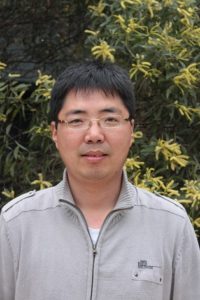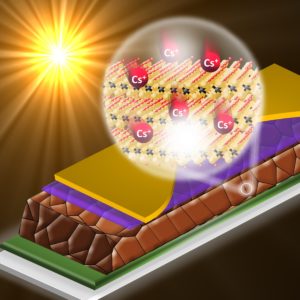Griffith University scientists are bringing a new generation of cheaper, more sustainable and efficient solar cells a step closer.
Researchers at Griffith University’s Centre for Catalysis and Clean Energy (CCCE) have collaborated with the University of Queensland and the École polytechnique fédérale de Lausanne in modifying a nanomaterial to create solar cells that are as efficient as silicon-based cells, but without their high cost and complexmanufacturing.

Associate Professor Yun Wang from Griffith University’s Centre for Catalysis and Clean Energy
Associate Professor Yun Wang said the research tackles a pressing need for environmentally-friendly energy sources that provide efficient and reliable energy production.
“Silicon-based solar cells make up 90 per cent of the solar panel market, but next-generation technologies like perovskite solar cells (PSCs) are attracting a great deal of attention because the can be easily manufactured and are highly efficient,” Associate Professor Wang said.
“Despite rapid development of PSC technology in recent years, these solar cells suffer from material defects formed during synthesis, which affect the cell’s performance and lifetime.”
Professor Shapter at UQ’s Australian Institute for Bioengineering and Nanotechnology (AIBN) used doped nanomaterial, which is modified to enhance its electrical properties, to overcome some of these drawbacks and defects.
“The PSCs that had doped cells showed a remarkable solar conversion efficiency that exceeded 21 percent,” Professor Shapter said.
Solar cell efficiency is the rate at which a solar panel transfers the sunlight into electricity, with the average silicon cell efficiency presently between 15 and 22 per cent.

Research shows that modifying a nanomaterial, including incorporating cesium ions within its layers, can improve efficiency and stability of solar cells.
“This gives us hope that solar energy can continue to develop and improve as one of the most effective renewable and sustainable energy technologies,” Professor Shapter said.
Associate Professor Wang used atomistic modelling to help understand the interaction between these doped protection layers and materials used for light absorption.
“Our results explain how doped nanomaterials can greatly improve the energy conversion efficiency and lifetime of solar cells by significantly reducing the number of defects that occur within the cell layers,” Dr Wang said.
Dr Munkhbayar Batmunkh from CCCE said the research contributes to a global push to develop PSC and other types of solar cells to create a sustainable, efficient, and low-cost replacement for present silicon-based technology.
The research has been published in Cell Reports Physical Science.

